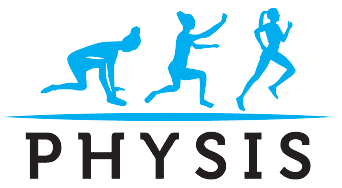Preparing for childbirth is one of the most important aspects of a healthy pregnancy. One often-overlooked aspect of childbirth preparation is the pelvic floor. The pelvic floor is a group of muscles that support the uterus, bladder, and bowel. During pregnancy, the pelvic floor experiences extra strain due to the weight of the growing baby. This can lead to issues such as urinary incontinence, pelvic pain, and even pelvic organ prolapse. Other more commonly known complication that impacts the abdominal wall is diastasis recti.
We will focus on the pelvic floor in this blog.
There are several exercises and positions that can help prepare the pelvic floor for birth. We will explore six positions that can help strengthen and relax the pelvic floor muscles in preparation for childbirth.
- Squatting
Squatting is a great position for preparing the pelvic floor for childbirth. It helps to open up the pelvic outlet and stretch the perineum, which is the area between the vagina and anus. This position can also help to increase the diameter of the pelvic outlet, making it easier for the baby to pass through during birth.
To do a squat, stand with your feet shoulder-width apart and toes pointing slightly outward. Slowly lower your body into your buttocks (pretending you are sitting in a chair) by bending your knees and hips, keeping your back straight. Try to keep your heels on the ground and your knees pointing in the same direction as your toes. You can either hold this position, do small taps to a chair behind you, Hold the position for a few seconds before standing back up. Repeat this exercise several times a day.
- Pelvic tilts
Pelvic tilts are an excellent exercise for strengthening the pelvic floor muscles. This exercise helps to stretch and tone the muscles in the pelvic region, including the abdominal muscles, hip flexors, and pelvic floor muscles.
To do a pelvic tilt, lie on your back with your knees bent and feet flat on the ground. Slowly lift your hips off the ground, using your abdominal muscles to tilt your pelvis forward. Hold the position for a few seconds before lowering your hips back down. Repeat this exercise several times a day.
- Cat-cow pose
The cat-cow pose is a yoga pose that can help to relax and stretch the pelvic floor muscles. This pose involves moving between two positions: the cat position and the cow position.
To do the cat-cow pose, start on your hands and knees with your wrists directly under your shoulders and your knees under your hips. Inhale and arch your back, lifting your head and tailbone towards the ceiling (cow position). Exhale and round your spine, tucking your chin to your chest and bringing your tailbone towards your knees (cat position). Repeat this exercise several times a day.
- Side-lying position
The side-lying position is a comfortable position that can help to relax the pelvic floor muscles. This position is also helpful for reducing pressure on the back and hips.
To do the side-lying position, lie on your side with a pillow between your knees. Make sure your spine is straight and your hips are in a neutral position. Relax your pelvic floor muscles and take deep, slow breaths. Repeat this exercise several times a day.
- Kneeling lunge
The kneeling lunge is a great exercise for stretching the hip flexors and opening up the pelvic outlet. This position can also help to relieve lower back pain during pregnancy.
To do the kneeling lunge, kneel on one knee with your other foot flat on the ground in front of you. Slowly shift your weight forward, keeping your front knee over your ankle. Hold the position for a few seconds before returning to the starting position. Repeat on the other side. Repeat this exercise several times a day.
- Seated butterfly stretch
The seated butterfly stretch is a great exercise for stretching the inner thighs and opening up the pelvic outlet. This position can also help to relieve hip and lower back pain
In conclusion, preparing the pelvic floor for childbirth is essential for a healthy pregnancy and delivery. These four exercises and positions can help to strengthen and relax the pelvic floor muscles, reducing the risk of complications during childbirth. Remember to always consult your healthcare provider before beginning any new exercise routine during pregnancy.



Comments are closed